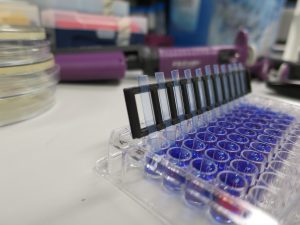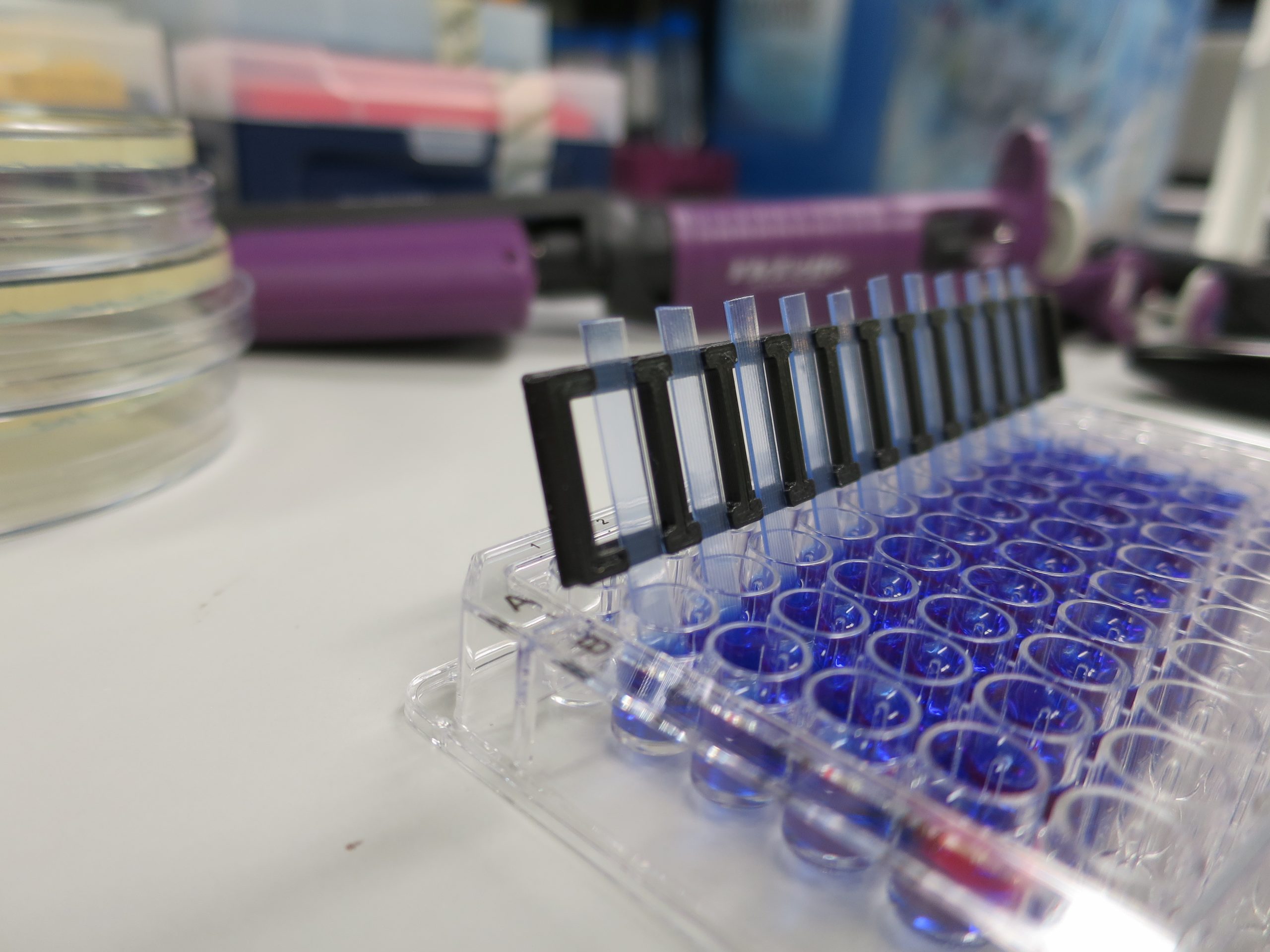Microfluidic Antimicrobial Resistance Tests
At EdwardsLab we use microfluidic devices to develop rapid antimicrobial resistance
tests for UTI infections. These tests use a hydrophillic microcapillary film with
different capillaries coated with antibiotics. The urine sample is then mixed with a
metabolic dye that turns from blue to pink
or from non-fluorescent to fluroescent in
the presence of bacteria.
Microcapillary film
Using these hydrophillic microcapillary film strips, a single well of a 96 well plate can be expanded to 10 individual tests. We use 3D printing rapid prototyping to make accessories for the microcapillary strips like the clip on ladder.


Time-lapse imaging with low-cost hardware
Using timelapse imaging and microcapillaries allows us to
- Determine the starting concentration of bacteria in an unknown sample
- Rapidly determine susceptability profiles for different antibiotics
To monitor our experiments we use low-cost hardware such as raspberry pi computers and cameras that we can program to take images at specific time points. We have added a raspberry pi camera to a 3D printer frame. This allows us to switch on LEDs, take a picture and move over an imaging area to increase out throughput of experiments.
Take a look at our PLOS One publication on low-cost raspberry pi based imaging setup here.

